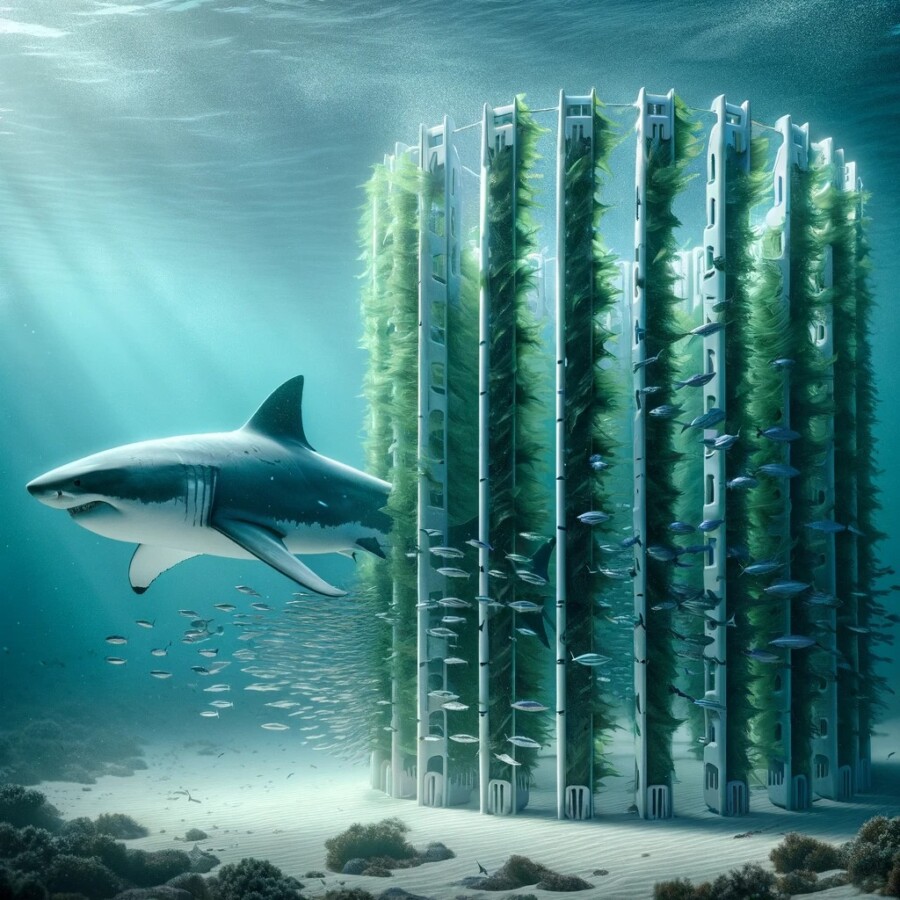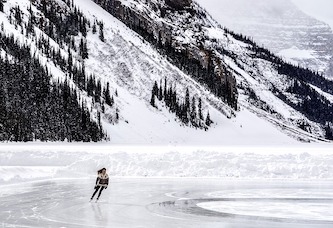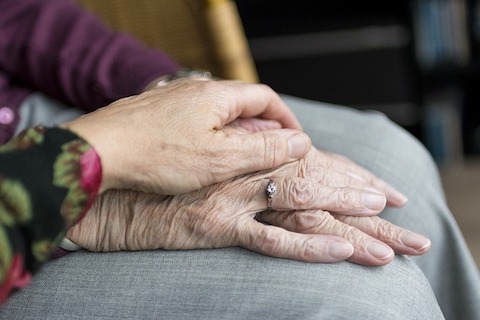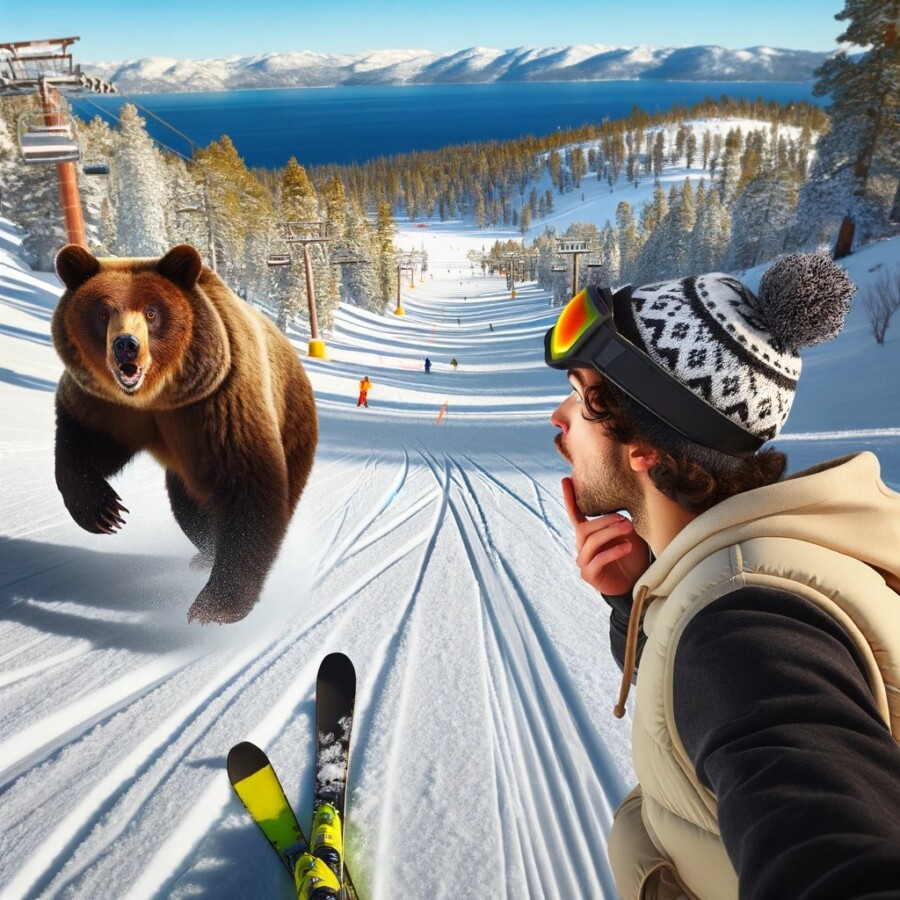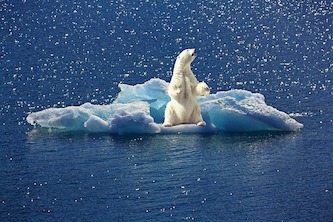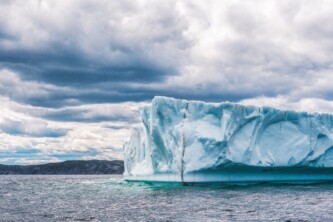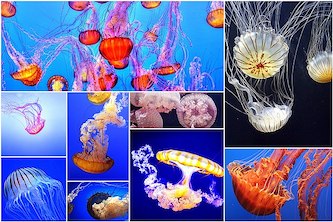Shark spotters in Cape Town, South Africa, are back in action as great white sharks have returned to the area after a four-year absence. In the past, these predators were responsible for fatal attacks on swimmers. While some places resort to killing sharks using nets and baited hooks, this approach harms other marine life. The International Union for Conservation of Nature advocates for non-lethal methods to address the risk from sharks. In Cape Town, the goal is to protect both sharks and people by keeping them apart. A team of professional shark spotters has been operating in the area for over 15 years. Their aim is to prevent negative interactions between people and sharks and strike a balance between recreational water user safety and white shark conservation.
The return of great white sharks is actually welcomed by conservationists as their disappearance has been a cause for concern for the ecology of the waters off Cape Town. The shark spotters monitor five beaches from the surrounding mountainsides, with those at higher elevations in radio contact with colleagues on the beaches. If a potentially dangerous shark is spotted, alerts are issued and the waters are cleared. A flag system is used to indicate the latest status, with a white flag signaling that people should leave the sea immediately. The team also sets up a 350m exclusion net each morning off Fish Hoek beach to create a safe bathing area. The net is placed down to the seabed and across the bay, and is lifted each evening to avoid harming sea life. This unique system has a minimal environmental impact, distinguishing it from traditional fixed shark barriers.
Shark bites are described as incredibly traumatic events that have significant social, economic, and environmental impacts on communities. In Plettenberg Bay, where two fatal shark attacks occurred last year, shark spotters now monitor five beaches and have made over 70 great white shark sightings in a year. The implementation of shark spotters came after the death of Kimon “Kiki” Bisogno, a community worker who was killed in a shark attack. Her partner, Diego Milesi, believes that if a “beware of sharks” sign had been put up after the first accident, Kiki might not have gone swimming. He emphasizes the importance of awareness and understanding of the risks in the waters.
In addition to shark spotters, other non-lethal approaches to dealing with sharks are being explored. A local marine biologist is overseeing the creation of a shark barrier that mimics an underwater forest of kelp, which sharks dislike. The barrier contains magnets that repel sharks, as they are sensitive to electric and magnetic fields. This concept is a change for people and is a hard sell, but it has been successfully tested on a private island in the Bahamas. The marine biologist emphasizes the crucial role of sharks as top predators in maintaining balance in the ecosystem and warns against their removal through culls and deliberate targeting.
Overall, the efforts in Cape Town aim to protect both sharks and people by finding
Original news source: South Africa’s shark spotters back in action as great whites return (BBC)
🎧 Listen:
Slow
Normal
Fast
📖 Vocabulary:
| 1 | predators | Organisms that hunt and feed on others |
| 2 | conservationists | Individuals who work to protect and preserve the natural environment |
| 3 | ecology | The study of the relationships between living organisms and their surroundings |
| 4 | colleagues | People who work together, typically in a professional setting |
| 5 | traumatic | Emotionally disturbing or distressing |
| 6 | exclusion | The act of preventing access or entry |
| 7 | seabed | The bottom of a body of water such as an ocean or lake |
| 8 | minimal | Very small or insignificant in amount or degree |
| 9 | barriers | Obstructions or structures that prevent passage or access |
| 10 | economic | Related to the management of resources and finances within a community or society |
| 11 | awareness | The state of being conscious or informed about something |
| 12 | non-lethal | Methods or approaches that do not involve killing or causing death |
| 13 | biologist | A scientist who studies living organisms and their relationship to their environment |
| 14 | ecosystem | A community of interacting organisms and their physical environment |
| 15 | culls | The practice of reducing a population of animals by selective slaughter |
Group or Classroom Activities
Warm-up Activities:
– News Summary
Instructions: Divide the class into pairs or small groups. Give each group a few minutes to read the article. Then, ask each group to summarize the main points of the article in a news summary format. They should aim to condense the information into a few sentences or bullet points. Afterward, have each group share their summaries with the class.
– Opinion Poll
Instructions: Divide the class into pairs or small groups. Ask each group to discuss and share their opinions on the topic of shark spotters and non-lethal methods for dealing with sharks. Afterward, conduct an opinion poll by asking each group to vote on whether they agree or disagree with the use of shark spotters and non-lethal methods. Have each group share their reasoning behind their votes.
– Vocabulary Pictionary
Instructions: Write a list of vocabulary words from the article on the board. Divide the class into teams. Each team takes turns choosing a word from the list and drawing a picture to represent that word. The other teams must guess the word based on the drawing. Teams earn points for correct guesses. This activity helps reinforce vocabulary from the article.
– Pros and Cons
Instructions: Divide the class into pairs or small groups. Ask each group to discuss and list the pros and cons of using shark spotters and non-lethal methods for dealing with sharks. Afterward, have each group share their lists and facilitate a class discussion on the advantages and disadvantages of these approaches.
– Future Predictions
Instructions: Ask students to imagine and discuss what they think the future will hold for shark spotters and non-lethal methods for dealing with sharks. Will these methods become more widely adopted? Will new technologies be developed? Will attitudes toward sharks change? Encourage students to think critically and share their predictions with the class.
🤔 Comprehension Questions:
1. Why are shark spotters in Cape Town important?
2. How do the shark spotters communicate with each other?
3. What does a white flag indicate to beachgoers?
4. How does the exclusion net off Fish Hoek beach work?
5. Why are shark bites described as traumatic events?
6. What prompted the implementation of shark spotters in Plettenberg Bay?
7. What is the purpose of the shark barrier being created by the marine biologist?
8. Why does the marine biologist warn against the removal of sharks through culls and deliberate targeting?
Go to answers ⇩
🎧✍️ Listen and Fill in the Gaps:
Shark (1)______ in Cape Town, South Africa, are back in action as great white sharks have returned to the area after a four-year absence. In the past, these predators were responsible for fatal attacks on swimmers. While some places (2)______ to killing sharks using nets and baited hooks, this approach harms other marine life. The (3)______ Union for Conservation of Nature advocates for non-lethal methods to address the risk from sharks. In Cape Town, the goal is to protect both sharks and people by keeping them apart. A team of professional shark spotters has been operating in the area for over 15 years. Their aim is to prevent negative interactions between people and sharks and (4)______ a balance between recreational water user safety and white shark conservation.
The return of great white (5)______ is actually welcomed by conservationists as their (6)______ has been a cause for concern for the ecology of the waters off Cape Town. The shark spotters monitor five beaches from the surrounding mountainsides, with those at higher elevations in (7)______ contact with colleagues on the beaches. If a potentially dangerous shark is spotted, alerts are issued and the waters are cleared. A flag system is used to indicate the latest status, with a white flag signaling that people should leave the sea immediately. The team also sets up a 350m exclusion net each (8)______ off Fish Hoek beach to create a safe bathing area. The net is placed down to the seabed and across the bay, and is lifted each evening to avoid harming sea life. This unique system has a minimal environmental impact, distinguishing it from traditional fixed shark barriers.
Shark bites are (9)______ as incredibly traumatic events that have significant social, economic, and environmental impacts on communities. In Plettenberg Bay, where two fatal shark attacks occurred last year, shark spotters now monitor five beaches and have made over 70 great white shark sightings in a year. The implementation of shark spotters came after the death of Kimon “Kiki” (10)______, a community (11)______ who was killed in a shark attack. Her partner, (12)______ Milesi, believes that if a “beware of sharks” sign had been put up after the first accident, Kiki might not have gone swimming. He emphasizes the importance of awareness and understanding of the risks in the waters.
In addition to shark spotters, other non-lethal approaches to dealing with sharks are being explored. A local marine biologist is overseeing the creation of a shark barrier that mimics an underwater forest of kelp, which sharks (13)______. The barrier contains magnets that repel sharks, as they are sensitive to electric and magnetic (14)______. This concept is a change for (15)______ and is a hard sell, but it has been successfully tested on a private island in the Bahamas. The marine biologist emphasizes the crucial role of sharks as top predators in maintaining balance in the ecosystem and warns against their removal through culls and deliberate targeting.
Overall, the (16)______ in Cape Town aim to protect both sharks and people by finding
Go to answers ⇩
💬 Discussion Questions:
Students can ask a partner these questions, or discuss them as a group.
1. What is your opinion on using non-lethal methods to address the risk from sharks?
2. How would you feel if you encountered a great white shark while swimming in the ocean?
3. Do you think it is important to protect sharks as top predators in the ecosystem? Why or why not?
4. Have you ever had an encounter with a shark or any other dangerous marine animal? Can you describe it?
5. What do you think about the idea of using a shark barrier that mimics an underwater forest of kelp?
6. How do you think the return of great white sharks to Cape Town will impact the local ecology?
7. Do you think it is the responsibility of humans to protect themselves from sharks, or the responsibility of sharks to avoid humans? Why?
8. What are some potential social, economic, and environmental impacts of shark bites on communities?
9. How would you feel if you saw a white flag signaling that you should leave the sea immediately due to a potentially dangerous shark?
10. Do you think shark spotters should be implemented in all areas where shark attacks are a risk? Why or why not?
11. Have you ever seen a shark in the wild? If so, what was your reaction?
12. How do you think the use of magnets to repel sharks in a shark barrier could impact the marine ecosystem?
13. Do you like swimming in the ocean? Why or why not?
14. What measures do you think should be taken to raise awareness and understanding of the risks in the waters?
15. How do you think the presence of great white sharks in Cape Town will affect recreational water activities?
Individual Activities
📖💭 Vocabulary Meanings:
Match each word to its meaning.
Words:
1. predators
2. conservationists
3. ecology
4. colleagues
5. traumatic
6. exclusion
7. seabed
8. minimal
9. barriers
10. economic
11. awareness
12. non-lethal
13. biologist
14. ecosystem
15. culls
Meanings:
(A) The study of the relationships between living organisms and their surroundings
(B) Related to the management of resources and finances within a community or society
(C) The practice of reducing a population of animals by selective slaughter
(D) Emotionally disturbing or distressing
(E) Very small or insignificant in amount or degree
(F) People who work together, typically in a professional setting
(G) The state of being conscious or informed about something
(H) Organisms that hunt and feed on others
(I) A scientist who studies living organisms and their relationship to their environment
(J) A community of interacting organisms and their physical environment
(K) Obstructions or structures that prevent passage or access
(L) The bottom of a body of water such as an ocean or lake
(M) The act of preventing access or entry
(N) Individuals who work to protect and preserve the natural environment
(O) Methods or approaches that do not involve killing or causing death
Go to answers ⇩
🔡 Multiple Choice Questions:
1. What is the goal of the shark spotters in Cape Town?
(a) To prevent negative interactions between people and sharks
(b) To kill sharks using nets and baited hooks
(c) To remove sharks through culls and deliberate targeting
(d) To create a safe bathing area using exclusion nets
2. Why is the return of great white sharks welcomed by conservationists?
(a) They pose a significant risk to swimmers
(b) Their disappearance has been a cause for concern for the ecology of the waters off Cape Town
(c) They harm other marine life
(d) They are a top predator in maintaining balance in the ecosystem
3. How do the shark spotters in Cape Town communicate with each other?
(a) They use a flag system to indicate the latest status
(b) They set up a 350m exclusion net each morning
(c) They issue alerts when a potentially dangerous shark is spotted
(d) They use radio contact between those on the mountainsides and those on the beaches
4. What is the purpose of the 350m exclusion net off Fish Hoek beach?
(a) To create a safe bathing area
(b) To kill sharks using baited hooks
(c) To mimic an underwater forest of kelp to repel sharks
(d) To monitor the waters for great white shark sightings
5. What is the impact of shark bites on communities?
(a) They have no impact on communities
(b) They have significant social, economic, and environmental impacts
(c) They only have social impacts
(d) They only have economic impacts
6. What led to the implementation of shark spotters in Plettenberg Bay?
(a) The return of great white sharks
(b) The need to protect other marine life
(c) The creation of a shark barrier
(d) Two fatal shark attacks
7. What is the purpose of the shark barrier being created in Cape Town?
(a) To kill sharks using nets and baited hooks
(b) To monitor the waters for great white shark sightings
(c) To mimic an underwater forest of kelp to repel sharks
(d) To create a safe bathing area
8. What does the marine biologist overseeing the creation of the shark barrier emphasize?
(a) The need to remove sharks through culls and deliberate targeting
(b) The importance of awareness and understanding of the risks in the waters
(c) The crucial role of sharks as top predators in maintaining balance in the ecosystem
(d) The harm caused by traditional fixed shark barriers
Go to answers ⇩
🕵️ True or False Questions:
1. The goal in Cape Town is to harm both sharks and people by keeping them apart.
2. Shark spotters do not monitor five beaches in Cape Town from surrounding mountainsides and issue alerts if a potentially dangerous shark is spotted.
3. A team of professional shark spotters has been operating in Cape Town for over 15 years.
4. The return of great white sharks is welcomed by conservationists as their disappearance has been a cause for concern for the ecology of the waters off Cape Town.
5. Shark spotters in Cape Town, South Africa, have returned to work after a four-year absence of great white sharks in the area.
6. The International Union for Conservation of Nature does not advocate for non-lethal methods to address the risk from sharks.
7. A flag system is used to indicate the latest status, with a white flag signaling that people should leave the sea immediately.
8. Other lethal approaches to dealing with sharks, such as the creation of a shark barrier using magnets, are being explored in Cape Town.
Go to answers ⇩
📝 Write a Summary:
Write a summary of this news article in two sentences.
Check your writing now with the best free AI for English writing!
Writing Questions:
Answer the following questions. Write as much as you can for each answer.
Check your answers with our free English writing assistant!
1. How do shark spotters in Cape Town work to prevent negative interactions between people and sharks?
2. Why is the return of great white sharks to Cape Town welcomed by conservationists?
3. What measures are taken to ensure the safety of swimmers when a potentially dangerous shark is spotted?
4. What is the impact of shark bites on communities?
5. What non-lethal approaches are being explored to deal with sharks in addition to shark spotters?
✅ Answers
🤔✅ Comprehension Question Answers:
1. Shark spotters in Cape Town are important because they help prevent negative interactions between people and sharks, and protect both sharks and people by keeping them apart.
2. The shark spotters communicate with each other through radio contact.
3. A white flag indicates to beachgoers that they should leave the sea immediately.
4. The exclusion net off Fish Hoek beach is placed down to the seabed and across the bay each morning to create a safe bathing area. It is lifted each evening to avoid harming sea life.
5. Shark bites are described as traumatic events because they have significant social, economic, and environmental impacts on communities.
6. The implementation of shark spotters in Plettenberg Bay was prompted by the death of Kimon “Kiki” Bisogno, a community worker who was killed in a shark attack. Her partner believes that if a “beware of sharks” sign had been put up after the first accident, Kiki might not have gone swimming.
7. The purpose of the shark barrier being created by the marine biologist is to create a safe area for beachgoers by mimicking an underwater forest of kelp that sharks dislike. The barrier contains magnets that repel sharks.
8. The marine biologist warns against the removal of sharks through culls and deliberate targeting because sharks play a crucial role as top predators in maintaining balance in the ecosystem. Removing them could have negative impacts on the ecosystem.
Go back to questions ⇧
🎧✍️✅ Listen and Fill in the Gaps Answers:
(1) spotters
(2) resort
(3) International
(4) strike
(5) sharks
(6) disappearance
(7) radio
(8) morning
(9) described
(10) Bisogno
(11) worker
(12) Diego
(13) dislike
(14) fields
(15) people
(16) efforts
Go back to questions ⇧
📖💭✅ Vocabulary Meanings Answers:
1. predators
Answer: (H) Organisms that hunt and feed on others
2. conservationists
Answer: (N) Individuals who work to protect and preserve the natural environment
3. ecology
Answer: (A) The study of the relationships between living organisms and their surroundings
4. colleagues
Answer: (F) People who work together, typically in a professional setting
5. traumatic
Answer: (D) Emotionally disturbing or distressing
6. exclusion
Answer: (M) The act of preventing access or entry
7. seabed
Answer: (L) The bottom of a body of water such as an ocean or lake
8. minimal
Answer: (E) Very small or insignificant in amount or degree
9. barriers
Answer: (K) Obstructions or structures that prevent passage or access
10. economic
Answer: (B) Related to the management of resources and finances within a community or society
11. awareness
Answer: (G) The state of being conscious or informed about something
12. non-lethal
Answer: (O) Methods or approaches that do not involve killing or causing death
13. biologist
Answer: (I) A scientist who studies living organisms and their relationship to their environment
14. ecosystem
Answer: (J) A community of interacting organisms and their physical environment
15. culls
Answer: (C) The practice of reducing a population of animals by selective slaughter
Go back to questions ⇧
🔡✅ Multiple Choice Answers:
1. What is the goal of the shark spotters in Cape Town?
Answer: (a) To prevent negative interactions between people and sharks
2. Why is the return of great white sharks welcomed by conservationists?
Answer: (b) Their disappearance has been a cause for concern for the ecology of the waters off Cape Town
3. How do the shark spotters in Cape Town communicate with each other?
Answer: (d) They use radio contact between those on the mountainsides and those on the beaches
4. What is the purpose of the 350m exclusion net off Fish Hoek beach?
Answer: (a) To create a safe bathing area
5. What is the impact of shark bites on communities?
Answer: (b) They have significant social, economic, and environmental impacts
6. What led to the implementation of shark spotters in Plettenberg Bay?
Answer: (d) Two fatal shark attacks
7. What is the purpose of the shark barrier being created in Cape Town?
Answer: (c) To mimic an underwater forest of kelp to repel sharks
8. What does the marine biologist overseeing the creation of the shark barrier emphasize?
Answer: (c) The crucial role of sharks as top predators in maintaining balance in the ecosystem
Go back to questions ⇧
🕵️✅ True or False Answers:
1. The goal in Cape Town is to harm both sharks and people by keeping them apart. (Answer: False)
2. Shark spotters do not monitor five beaches in Cape Town from surrounding mountainsides and issue alerts if a potentially dangerous shark is spotted. (Answer: False)
3. A team of professional shark spotters has been operating in Cape Town for over 15 years. (Answer: True)
4. The return of great white sharks is welcomed by conservationists as their disappearance has been a cause for concern for the ecology of the waters off Cape Town. (Answer: True)
5. Shark spotters in Cape Town, South Africa, have returned to work after a four-year absence of great white sharks in the area. (Answer: True)
6. The International Union for Conservation of Nature does not advocate for non-lethal methods to address the risk from sharks. (Answer: False)
7. A flag system is used to indicate the latest status, with a white flag signaling that people should leave the sea immediately. (Answer: True)
8. Other lethal approaches to dealing with sharks, such as the creation of a shark barrier using magnets, are being explored in Cape Town. (Answer: False)
Go back to questions ⇧



